Premium Only Content

They Were Just in the Way Indian Removal
Silent and satisfied the contented majority
Removal for their own safety I can see America repeating this nightmare
those not cultivating crops would be left to starve
The Causes and Consequences of Indian Removal
https://americainclass.org/wp-content/uploads/2013/03/WEB-Indian-Removal-Presentation.pdf
In 1835 the federal government succeeded in obtaining a treaty with unauthorized representatives of the Cherokee Nation, which Congress ratified on May 23, 1836.
The New Echota Treaty allowed the Cherokees two years to remove voluntarily.
While Principal Chief John Ross led numerous delegations to Washington to protest the treaty,
the majority of Cherokees refused to emigrate.
They waited and watched as the federal government established military posts,
mustered state militia into federal service, and restrained the governments and citizens of the states from starting an Indian war.
Indian Removal Act
Law signed on May 28, 1830 by President Andrew Jackson
The Indian Removal Act of 1830 was signed into law on May 28, 1830, by United States President Andrew Jackson.
The law, as described by Congress, provided
"for an exchange of lands with the Indians residing in any of the states or territories, and for their removal west of the river Mississippi".
https://history.state.gov/milestones/1830-1860/indian-treaties
The Standard American History Myth treats American Indians as if they were an obstacle in the way of westward expansion and our inevitable march of progress.
But nothing about what the United States did to the Native Americans was inevitable.
Timeline
1610 - 1646
The Anglo-Powhatan Wars of Virginia.
1610 - 1614
Wahunsenacah launches and directs the First Powhatan War in an effort to drive the English from his land.
1614
John Rolfe marries Pocahontas; union ends the First Powhatan War.
1614 - 1622
Peace of Pocahontas between English colonists and Powhatans; established by the marriage of Pocahontas and John Rolfe.
1622 - 1626
Second Powhatan War.
22 Mar 1622
The "Indian Massacre" of the Jamestown colony when the Powhatan Confederacy fights for their land; over 300 colonists killed.
c. 1630 - 1644
Peace between English Colonists and Native Americans kept by palisade built between them.
1644 - 1646
Third Powhatan War.
1646
Powhatan Confederacy dissolved by Treaty of 1646.
1677
Treaty of Middle Plantation sets up reservations for the surviving Powhatan tribes; English colonists claim Powhatan lands.
1492 Columbus reaches the “New World”
https://www.history.com/this-day-in-history/columbus-reaches-the-new-world
We Finally Discovered the Native Americans’ TRUE History
https://rumble.com/v57hbsl-we-finally-discovered-the-native-americans-true-history.html
history for pre-Columbian North America.
THE WALLAM OLUM (THE RED RECORD)
http://lenapedelawarehistory.net/mirror/wallamolum.htm
The Red Record : The Oldest Native North American History
translation of the tribal history of the Leni-Lanape Indians--later known as the Delaware Indians--who have lived in North America longer than any other Native American people.
"The Red Record" depicts their nearly 2,000-year-long migration out of Asia and across the pre-Columbian North America. 183 photos; 22 line drawings; 18 maps; 28 charts.
https://archive.org/details/redrecordwallamo0000unse/page/n3/mode/2up
THE WALAM OLUM
https://ia600808.us.archive.org/2/items/WALEMOLUM/WALEM%20OLUM.pdf
The Virginia Company of London was a joint-stock company chartered by King James I in 1606 to establish a colony in North America.
Such a venture allowed the Crown to reap the benefits of colonization—natural resources, new markets for English goods, leverage against the Spanish—without bearing the costs. Investors, meanwhile, were protected from catastrophic losses in the event of the project’s failure.
The company established a settlement at Jamestown in 1607, and over the next eighteen years,
the Crown granted the company two new charters, democratizing its governance and reforming its financial model.
What began as an enterprise of investors seeking a dividend was funded a decade later almost exclusively by a public lottery.
By 1618 the company had found a way to use its most abundant resource—land
—to tempt settlers to pay their own passage from England to the colony and then, after arrival, to pay the company a quitrent, or fee,
to use the land. Still, the Virginia Company and the colony it oversaw struggled to survive. Disease, mismanagement, Indian attacks, and factionalism in London all took a toll until, in 1623,
the Privy Council launched an investigation into the company’s finances. A year later,
the company’s charter was revoked and the king assumed direct control of Virginia.
https://encyclopediavirginia.org/entries/virginia-company-of-london/
The Lost Colony of Roanoke | Britannica
https://www.britannica.com/story/the-lost-colony-of-roanoke
Jamestown Colony - Starving Time, Near Abandonment, 1609-11
https://www.britannica.com/place/Jamestown-Colony/The-Starving-Time-and-near-abandonment-1609-11
A Brief History of Tobacco in the Americas
When England began to colonize North America in the late 16th century CE, Sir Walter Raleigh (l. c. 1552-1618 CE) introduced the older, rougher, strain of tobacco – N. rustica – to Britain. By this time (c. 1585 CE), tobacco had already become a popular, recreational drug in the country, but N. rustica was a much harsher smoke than the Spanish N. tabacum.
The English colony of Jamestown was established in 1607 CE and a hybrid of various strains of N. tabacum was brought and planted by the merchant John Rolfe (l. 1585-1622 CE) in 1610 CE. Rolfe's crop not only made him wealthy but saved the Jamestown Colony of Virginia and further popularized tobacco use in England, throughout Europe, and in the rest of the world.
Tobacco plantations expanded throughout Virginia as Jamestown itself began to grow,
taking more land from the Native Americans of the region, and this practice finally resulted in the Anglo-Powhatan Wars (1610-1646 CE) which drove out most of the original inhabitants and made more room for even larger plantations.
https://www.worldhistory.org/article/1677/a-brief-history-of-tobacco-in-the-americas/
First Anglo-Powhatan War (1609-1614)
https://encyclopediavirginia.org/entries/first-anglo-powhatan-war-1609-1614/
Anglo-Powhatan War, Second (1622-1632)
https://encyclopediavirginia.org/entries/anglo-powhatan-war-second-1622-1632/
The Third Anglo-Powhatan War (1644–1646) was fought between Jamestown and the Powhatan Confederacy in the area known to the Powhatans as Tsenacomoco and Virginia to the colonists. Virginia won the war and brought an end to the once-powerful Powhatan Confederacy.
https://www.americanhistorycentral.com/entries/third-anglo-powhatan-war/
Pocahontas marries John Rolfe | April 5, 1614
https://www.history.com/this-day-in-history/pocahontas-marries-john-rolfe
Discovered after 400 years: The oldest church in America... where Pocahontas married Englishman John Rolfe
The French and Indian Wars were a series of conflicts that occurred in North America between 1688 and 1763, some of which indirectly were related to the European dynastic wars. The title French and Indian War in the singular is used in the United States specifically for the warfare of 1754–63, which composed the North American theatre of the Seven Years' War and the aftermath of which led to the American Revolution. The French and Indian Wars were preceded by the Beaver Wars.
https://en.wikipedia.org/wiki/French_and_Indian_Wars
Years of War North American War European War Treaty
1688–1697 King William's War 1st Intercolonial War (in French)[1]
Nine Years' War Treaty of Ryswick (1697) 1702–1713
Queen Anne's War 2nd Intercolonial War Dummer's War
War of the Spanish Succession Treaty of Utrecht (1713) 1744–1748
King George's War 3rd Intercolonial War War of Jenkins' Ear
War of the Austrian Succession Treaty of Aix-la-Chapelle (1748) 1754–1763
The French and Indian War (in the U.S.) Seven Years' War (in Canada)
4th Intercolonial War or War of the Conquest (in Quebec)[2]
Father Le Loutre's War
Pontiac's War
1763 war launched by Native American tribes primarily from the Great Lakes region, the Illinois Country, and Ohio Country against Kingdom of Great Britain
Pontiac's War was launched in 1763 by a loose confederation of Native Americans who were dissatisfied with British rule in the Great Lakes region following the French and Indian War. Warriors from numerous nations joined in an effort to drive British soldiers and settlers out of the region
https://www.americanhistorycentral.com/entries/pontiacs-rebellion/
Ile Ste.-Croix: The Birth of Acadia | The Canadian Encyclopedia
https://www.thecanadianencyclopedia.ca/en/article/ile-ste-croix-the-birth-of-acadia-feature
10 Uncovering the French on St. Croix: Stories of Seventeenth-Century Settlement and Abandonment on the Caribbean Frontier
French colonization of the Americas
https://en.wikipedia.org/wiki/French_colonization_of_the_Americas
Pontiac's Rebellion
https://www.mountvernon.org/library/digitalhistory/digital-encyclopedia/article/pontiacs-rebellion
Siege of Fort Pitt
1763 siege that was part of Pontiac's War
The siege of Fort Pitt took place during June and July 1763 in what is now the city of Pittsburgh, Pennsylvania, United States
Royal Proclamation of 1763
The Royal Proclamation of 1763 was issued by King George III on 7 October 1763. It followed the Treaty of Paris, which formally ended the Seven Years' War and transferred French territory in North America to Great Britain
https://en.wikipedia.org/wiki/Royal_Proclamation_of_1763
The Royal Proclamation of 1763
The Royal Proclamation - October 7, 1763
BY THE KlNG. A PROCLAMATION
GEORGE R.
https://www.ushistory.org/us/9a.asp
Treaty of Paris 1763
The definitive Treaty of Peace and Friendship between his Britannick Majesty, the Most Christian King, and the King of Spain.
Concluded at Paris the 10th day of February, 1763. To which the King of Portugal acceded on the same day.
https://avalon.law.yale.edu/18th_century/proc1763.asp
Northwest Indian Confederation | American Indian organization
https://www.britannica.com/topic/Northwest-Indian-Confederation
The Constitution’s First Declared War: The Northwestern Confederacy War of 1790–95
Lenni Lenape Culture | Native American Netroots
http://nativeamericannetroots.net/diary/1162
Treaty of Greenville
1795 treaty ending the Northwest Indian War
The Treaty of Greenville, also known to Americans as the Treaty with the Wyandots, etc., but formally titled A treaty of peace between the United States of America, and the tribes of Indians called the Wyandots, Delawares, Shawanees, Ottawas, Chippewas, Pattawatimas, Miamis, Eel Rivers, Weas, Kickapoos, Piankeshaws, and Kaskaskias was a 1795 treaty between the United States and indigenous nations of the Northwest Territory, including the Wyandot and Delaware peoples, that redefined the boundary between indigenous peoples' lands and territory for European American community settlement
https://www.britannica.com/event/Treaty-of-Greenville
First Nations surrounding the Great Lakes
https://greatlakes.guide/ideas/nations-surrounding-the-great-lakes
When Native Americans Briefly Won Back Their Land
A proclamation by King George III set the stage for Native American rights—and the eventual loss of most tribal lands.
https://www.history.com/news/native-american-land-british-colonies
American revolution 1776 -1783
https://en.wikipedia.org/wiki/American_Revolution
Eastern Woodlands Indigenous Peoples in Canada
https://www.thecanadianencyclopedia.ca/en/article/aboriginal-people-eastern-woodlands
Britain Begins Taxing the Colonies: The Sugar & Stamp Acts
https://www.nps.gov/articles/000/sugar-and-stamp-acts.htm
Did Colonists Give Infected Blankets to Native Americans as Biological Warfare?
There’s evidence that British colonists in 18th-century America gave Native Americans smallpox-infected blankets at least once—but did it work?
https://www.history.com/news/colonists-native-americans-smallpox-blankets
The Boston Tea Party was a political protest staged on December 16, 1773 at Griffin's Wharf in Boston, Massachusetts. ... The Sons of Liberty were a group of colonial merchants and tradesmen
https://www.history.com/topics/american-revolution/boston-tea-party
The Lenni Lenape and the Revolutionary War
http://nativeamericannetroots.net/diary/1179
From Thomas Jefferson to Hendrick Aupaumut, 21 December 1808
https://founders.archives.gov/documents/Jefferson/99-01-02-9358
Andrew Jackson is often credited with initiating Indian Removal, because Congress passed the Indian Removal Act in 1831,
during his presidency, and also because of his personal involvement in the forceful removal of many Eastern Indian tribes.
Congress was implementing suggestions laid out by Jefferson in a series of private letters that began in 1804,
although Jefferson did not implement the plan during his own presidency.
The rise of Napoleon in Europe, and rumor of a possible transfer of the Louisiana Territory from the Spanish empire to the more aggressive French, was cause for consternation amongst some people in the American republic.
Jefferson advocated for the militarization of the Western border, along the Mississippi River.
He felt that the best way to accomplish this was to flood the area with a large population of white settlements.
Currently, the U.S. recognizes tribal nations as "domestic dependent nations" and uses its own legal system to define the relationship between the federal, state, and tribal governments.
The U.S. recognizes 574 tribal nations, 229 of which are in Alaska. The National Congress of American Indians explains,
"Native peoples and governments have inherent rights and a political relationship with the U.S. government that does not derive from race or ethnicity."
On Difference and Equality ~ The Imaginative Conservative
https://theimaginativeconservative.org/2014/12/difference-equality.html
United States Government Fur Trade Factory System
Government Agency
The United States Government Fur Trade Factory System was a system of government non-profit trading with Native Americans that existed between 1795 and 1822.
The factory system was set up on the initiative of George Washington who thought it would neutralize the influence of British traders doing business on United States territory
During the early 1800s, the US government adopted policies aimed at acculturating and assimilating Native people into European American society. Agents at the St. Peters Agency encouraged Dakota people to give up hunting as a primary method of subsistence, educate their children according to European American standards, give up their traditional religion to become practicing Christians, and adopt European American agricultural methods.
The agents also encouraged a change in traditional Dakota gender roles; traditionally,
Dakota women and children had worked the fields and gardens, and the agents wanted men to give up hunting and take over this work.
https://www.mnhs.org/fortsnelling/learn/native-americans/us-indian-agency
The US Indian Agency (1820-1853)
Indian agencies were created as part of the US government's efforts to control trade between the US and Native American nations. In 1806 the federal office of the Superintendent of Indian Trade was created to monitor and control economic activity between Native people and the US government.
In March 1824 Secretary of War John C. Calhoun created the Bureau of Indian Affairs to replace the Indian Trade Office,
officially placing responsibility for working with Native communities under the control of the US War Department.
In addition to controlling trade, the bureau was responsible for settling disputes between Native Americans and European Americans,
as well as for appropriating funds from Congress to fund efforts by the Indian agents to acculturate Natives into European American society.
https://www.mnhs.org/fortsnelling/learn/native-americans/us-indian-agency
Seeds of Extinction: Jeffersonian Philanthropy and the American Indian. New York: W. W. Norton & Co., 1973. Wingerd, Mary Lethert
https://muse.jhu.edu/book/40401
Louisiana Purchase Treaty (1803)
https://www.archives.gov/milestone-documents/louisiana-purchase-treaty
Avalon Project - The Treaty of Greenville 1795 - Yale University
Treaty of Greenville | US-Northwest Indian Peace [1795]
Treaty of Greenville, (August 3, 1795), settlement that concluded hostilities between the United States and an Indian confederation headed by Miami chief Little Turtle by which the Indians ceded most of the future state of Ohio and significant portions of what would become the states of Indiana,
https://avalon.law.yale.edu/18th_century/greenvil.asp
An Indigenous Constitution: The 1827
Cherokee Nation Constitution
Formed by a Convention of Delegates from the several Districts, at New Echota, July 1827 Published February, 21, 1828.
https://civics.asu.edu/sites/default/files/2021-06/Q117%20An%20Indigenous%20Constitution_CPTL.pdf
Thomas Jefferson and Native Americans
Before and during his presidency, Jefferson discussed the need for respect, brotherhood, and trade with the Native Americans, and he initially believed that forcing them to adopt European-style agriculture and modes of living would allow them to quickly "progress" from "savagery" to "civilization".[2] Beginning in 1803, Jefferson's private letters show increasing support for the idea of removal,
and he suggested various ideas for removing tribes from enclaves in the East to their own new lands in lands west of the Mississippi River.
https://en.wikipedia.org/wiki/Thomas_Jefferson_and_Native_Americans
Five Civilized Tribes
The term Five Civilized Tribes was applied by the United States government in the early federal period of the history of the United States to the five major Native American nations in the Southeast: the Cherokee, Chickasaw, Choctaw, Muscogee, and Seminoles.
https://www.britannica.com/topic/Five-Civilized-Tribes
The 1828 presidential election was the first in which non-property-holding white males could vote in the vast majority of states.
Timeline of voting rights in the United States
https://en.wikipedia.org/wiki/Timeline_of_voting_rights_in_the_United_States
The Founders and the Vote
At first, white men with property were the only Americans routinely permitted to vote.
President Andrew Jackson, champion of frontiersmen, helped advance the political rights of those who did not own property.
By about 1860, most white men without property were enfranchised. But African Americans, women, Native Americans, non-English speakers, and citizens between the ages of 18 and 21 had to fight for the right to vote in this country.
https://www.loc.gov/classroom-materials/elections/right-to-vote/the-founders-and-the-vote/
1828 United States presidential election
https://en.wikipedia.org/wiki/1828_United_States_presidential_election
Isaac McCoy (June 13, 1784 - June 21, 1846) was a Baptist missionary among the Native Americans in what is now Indiana, Michigan, Missouri, and Kansas. He was an advocate of Indian removal from the eastern United States, proposing an Indian state in what is now Kansas, Nebraska, and Oklahoma.
https://en.wikipedia.org/wiki/Isaac_McCoy
THE CHEROKEE NATION v. THE STATE OF GEORGIA.
https://www.law.cornell.edu/supremecourt/text/30/1
Cherokee Removal Scenes: Ellijay, Georgia, 1838
https://southernspaces.org/2012/cherokee-removal-scenes-ellijay-georgia-1838/
Bureau of Indian Affairs
"self determination without termination"
president richard m. nixon's approach to native american policy reform
https://www.whitehousehistory.org/self-determination-without-termination
The Black Hawk War of 1832
https://www.britannica.com/event/Black-Hawk-War
Indian trade and intercourse act June 30 1834
Nonintercourse Act
The Nonintercourse Act is the collective name given to six statutes passed by the United States Congress in 1790, 1793, 1796, 1799, 1802, and 1834 to set boundaries of American Indian reservations.
The various acts were also intended to regulate commerce between White Americans and citizens of Indigenous nations.
https://digitalprairieok.net/wp-content/uploads/2019/10/Trade-Act-of-1834.pdf
Early History and Relationships Between Nations
https://americanindian.si.edu/nk360/removal-cherokee/early-history.html
Dred Scott v. Sandford
1857 U.S. Supreme Court case on the citizenship of African-Americans
Dred Scott v. Sandford, 60 U.S. 393, was a landmark decision of the United States Supreme Court that held the U.S. Constitution did not extend American citizenship to people of black African descent, and therefore they could not enjoy the rights and privileges the Constitution conferred upon American citizens.
https://en.wikipedia.org/wiki/Dred_Scott_v._Sandford
second Seminole war 1835 1842
https://www.britannica.com/event/Second-Seminole-War
treaty of new echota 1835
The Treaty of New Echota was a treaty signed on December 29, 1835, in New Echota, Georgia, by officials of the United States government and representatives of a minority Cherokee political faction,
the Treaty Party.
The treaty established terms for the Cherokee Nation to cede its territory in the southeast and move west to the Indian Territory.
https://americanindian.si.edu/static/nationtonation/pdf/Treaty-of-New-Echota-1835.pdf
Creek people lived, forcibly removed with Cherokees
The Treaty of the Dancing Rabbit Creek was signed on September 27, 1830. It was ratified by a vote of thirty-five to twelve.[2] The treaty said that the Choctaws would leave in three separate groups over the course of three years. Prior to the signing of the treaty, nine other treaties occurred between 1802 and 1830. In response to the ratification of the treaty, the Choctaw people elected new leaders for their nation because they felt as though their Previous leaders, Greenwood Leflore and Mushulatubbee, had led them astray.
https://www.choctawnation.com/wp-content/uploads/2022/03/1830treaty-of-dancing-rabbit-creek.pdf
INDIAN- AFFAIRS.
LAWS AN-D TREATIES.
https://americanindian.si.edu/static/nationtonation/pdf/Treaty-of-New-Echota-1835.pdf
Choctaw Trail of Tears
Attempted 1830s removal of Choctaw from present-day Alabama, Arkansas, Mississippi, and Louisiana
The Choctaw Trail of Tears was the attempted ethnic cleansing and relocation by the United States government of the Choctaw Nation from their country, referred to now as the Deep South, to lands west of the Mississippi River in Indian Territory in the 1830s by the United States government.
The Removal of the Choctaws to the Indian Territory, 1830-1833
https://gateway.okhistory.org/ark:/67531/metadc2191659/
The "Farewell Letter to the American People" was a widely published letter by Choctaw Chief George W. Harkins in February 1832. It denounced the removal of the Choctaw Nation to Oklahoma.
https://en.wikipedia.org/wiki/Farewell_Letter_to_the_American_People
CONSTITUTION OF THE CHOCTAW NATION OF OKLAHOMA
https://www.choctawnation.com/about/history/historical-documents/
Records of Native American Removal Available Online
Removal of Tribal Nations to Oklahoma
https://www.okhistory.org/research/airemoval
Forcing nomads to farm — the Utes’ sad story
In “The Utes Must Go!” Peter R. Decker explores how fear-mongering politicians and settlers suppressed the Ute bands in the 1800s
https://www.hcn.org/issues/issue-291/forcing-nomads-to-farm-the-utes-sad-story/
WE ALL CAME FROM NOAH!!
ALL THE PEOPLES OF THE WORLD ARE FROM THE SAME FAMILY ONLY DIVIDED BY THE SEA!!!
Genesis 10:5
Of these were the isles of the GENTILES divided in their lands, every man after his tongue and after their families in their nations....
The Judeans so call ALL countries which are SEPARATED from them by SEA, as Greece, Italy, etc., which were given to the CHILDREN of JAPHETH, of whom came the GENTILES...
Genesis 10
10 Now these are the generations of the sons of Noah, Shem, Ham, and Japheth: and unto them were sons born after the flood.
2 The sons of Japheth; Gomer, and Magog, and Madai, and Javan, and Tubal, and Meshech, and Tiras.
3 And the sons of Gomer; Ashkenaz, and Riphath, and Togarmah.
4 And the sons of Javan; Elishah, and Tarshish, Kittim, and Dodanim.
5 By these were the isles of the Gentiles divided in their lands; every one after his tongue, after their families, in their nations.
6 And the sons of Ham; Cush, and Mizraim, and Phut, and Canaan.
7 And the sons of Cush; Seba, and Havilah, and Sabtah, and Raamah, and Sabtechah: and the sons of Raamah; Sheba, and Dedan.
8 And Cush begat Nimrod: he began to be a mighty one in the earth.
9 He was a mighty hunter before the Lord: wherefore it is said, Even as Nimrod the mighty hunter before the Lord.
10 And the beginning of his kingdom was Babel, and Erech, and Accad, and Calneh, in the land of Shinar.
11 Out of that land went forth Asshur, and builded Nineveh, and the city Rehoboth, and Calah,
12 And Resen between Nineveh and Calah: the same is a great city.
13 And Mizraim begat Ludim, and Anamim, and Lehabim, and Naphtuhim,
14 And Pathrusim, and Casluhim, (out of whom came Philistim,) and Caphtorim.
15 And Canaan begat Sidon his first born, and Heth,
16 And the Jebusite, and the Amorite, and the Girgasite,
17 And the Hivite, and the Arkite, and the Sinite,
18 And the Arvadite, and the Zemarite, and the Hamathite: and afterward were the families of the Canaanites spread abroad.
19 And the border of the Canaanites was from Sidon, as thou comest to Gerar, unto Gaza; as thou goest, unto Sodom, and Gomorrah, and Admah, and Zeboim, even unto Lasha.
20 These are the sons of Ham, after their families, after their tongues, in their countries, and in their nations.
21 Unto Shem also, the father of all the children of Eber, the brother of Japheth the elder, even to him were children born.
22 The children of Shem; Elam, and Asshur, and Arphaxad, and Lud, and Aram.
23 And the children of Aram; Uz, and Hul, and Gether, and Mash.
24 And Arphaxad begat Salah; and Salah begat Eber.
25 And unto Eber were born two sons: the name of one was Peleg; for in his days was the earth divided; and his brother's name was Joktan.
26 And Joktan begat Almodad, and Sheleph, and Hazarmaveth, and Jerah,
27 And Hadoram, and Uzal, and Diklah,
28 And Obal, and Abimael, and Sheba,
29 And Ophir, and Havilah, and Jobab: all these were the sons of Joktan.
30 And their dwelling was from Mesha, as thou goest unto Sephar a mount of the east.
31 These are the sons of Shem, after their families, after their tongues, in their lands, after their nations.
32 These are the families of the sons of Noah, after their generations, in their nations: and by these were the nations divided in the earth after the flood.
Genesis
11:1 And the whole earth was of one language, and of one speech.
2 And it came to pass, as they journeyed from the east, that they found a plain in the land of Shinar; and they dwelt there.
3 And they said one to another, Go to, let us make brick, and burn them thoroughly. And they had brick for stone, and slime had they for morter.
4 And they said, Go to, let us build us a city and a tower, whose top may reach unto heaven; and let us make us a name, lest we be scattered abroad upon the face of the whole earth.
5 And the Lord came down to see the city and the tower, which the children of men builded.
6 And the Lord said, Behold, the people is one, and they have all one language; and this they begin to do: and now nothing will be restrained from them, which they have imagined to do.
7 Go to, let us go down, and there confound their language, that they may not understand one another's speech.
8 So the Lord scattered them abroad from thence upon the face of all the earth: and they left off to build the city.
9 Therefore is the name of it called Babel; because the Lord did there confound the language of all the earth: and from thence did the Lord scatter them abroad upon the face of all the earth.
original link found on Knowing Better
-
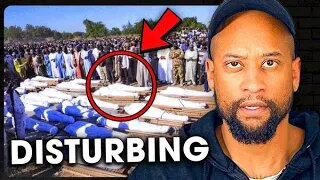 10:35
10:35
Watchman's Duty
5 days agoISIS Beheads 70 Christians in Church- Media is Silent
2.03K14 -
 DVR
DVR
Benny Johnson
8 hours ago🚨President Trump's State of the Union Speech LIVE Right Now! We're INSIDE US Capitol, Special Guests
229K228 -
 13:09:41
13:09:41
Barry Cunningham
23 hours agoPRESIDENT TRUMP SPEECH ADDRESS TO JOINT SESSION OF CONGRESS | INTERVIEWS ALL DAY!
74.7K38 -
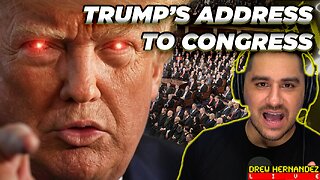 LIVE
LIVE
Drew Hernandez
20 hours agoWATCH PARTY: PRESIDENT TRUMP'S JOINT ADDRESS TO CONGRESS
805 watching -

Laura Loomer
3 hours agoEP106: LIVE COVERAGE: President Trump Addresses Congress
29.9K5 -
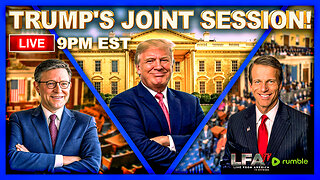
LFA TV
9 hours agoTRUMP'S JOINT SESSION! 3.4.25 9PM
41.4K13 -
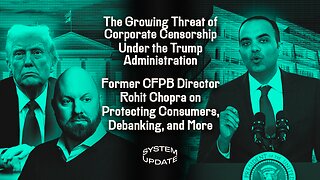 41:25
41:25
Glenn Greenwald
5 hours agoThe Growing Threat of Corporate Censorship Under the Trump Administration; Former CFPB Director Rohit Chopra on Protecting Consumers, Debanking, and More | SYSTEM UPDATE #417
72.2K23 -
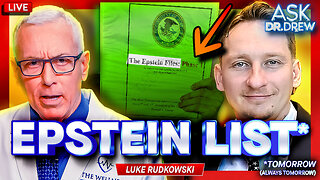 1:15:15
1:15:15
Dr. Drew
10 hours agoLuke Rudkowski: Epstein List Release Fail, Zelenskyy's White House Tantrum & Corruption In Congress – Ask Dr. Drew
82.9K15 -
 1:05:46
1:05:46
Candace Show Podcast
10 hours agoHarvey Speaks: Shocking Emails Revealed | Ep 2
118K59 -
 1:51:18
1:51:18
Michael Franzese
7 hours agoRFK Was Right… But It’s Worse Than You Think | Jillian Michaels
75.1K28